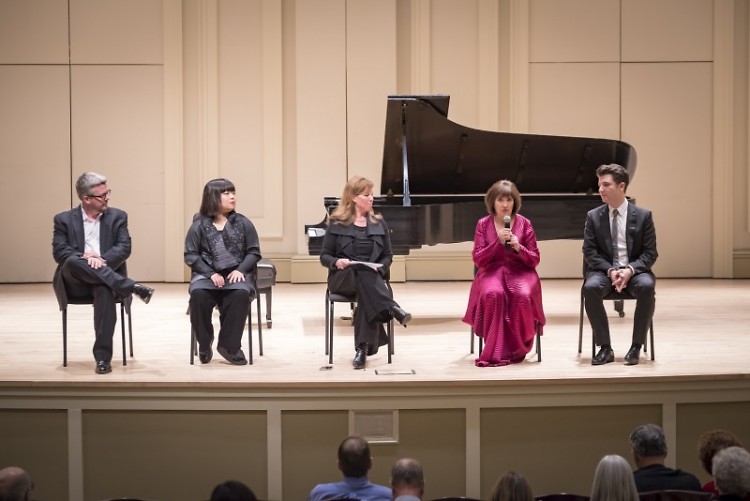It’s said that the only sure things in life are death and taxes, but classical devotees know of a third: that any concert taking place at Royce Auditorium will be filled with leather pants, gothic imagery and fake blood. The January 26 performance Faure and Brahms was no exception. My compatriots and I nodded heads, pumped fists, and worked off aggression in the mosh pit. By the end we were tired and sweaty, but we cherished the well-earned new scars.
No, of course that didn’t happen. But what if it had? It would have been memorable, certainly, but the shock would have been such that it would have drowned out the most important thing: the music.
Venues work best when they disappear.
Royce Auditorium disappears by elegantly fulfilling expectations before receding. It’s a beautiful place, if you haven’t been (or, in fact, if you have); a $2.5 million dollar renovation completed last fall is everywhere in evidence, from seats to sound. The design manages to be both elegant and understated.
Before the performance, Cathy Holbrook, Executive Director of St. Cecilia Music Society, brought on the evening’s four players and led them in a brief discussion. She began with some unnecessary self-deprecation; throughout she was warm and gracious, and if she was ever uncomfortable the audience couldn’t tell. My favorite exchange came when she asked the players to name their favorite of the night’s pieces. Viola player Yura Lee said, “I don’t have children, but I feel like these are my children. I can’t choose a favorite.” To which cellist Paul Waltkins replied, “I do have children, and I definitely have a favorite one.” After a beat, he added, “That’s called British irony.”
The concert (the second in a series done in conjunction with the Chamber Music Society of Lincoln Center) began with a quick, familiar piece: Brahms’ “Scherzo, WoO 2, from ‘F-A-E' Sonata for Violin and Piano.” At six minutes or so, it’s hardly longer than its name. But it had room enough for power and beauty, both of which pianist Alessio Bax and violinist Ani Kavafian extracted in full. There were moments in the performance during which, if my eyes had been closed, I would have sworn more than two people were on the stage.
Faure’s “Quartet for Piano, Violin, Viola and Cello No. 2 in G minor, Op. 45” followed. The four players were in perfect sync with each other. Alternately intense and contemplative, it was a thrilling, powerful piece. I found it to be the best that evening, as did my friend Molly and a gentleman behind us who shouted, at its conclusion, “That blew me away! Rock on!” (Note: unlike the fake blood and moshing, this actually happened).
After the intermission, Brahms returned. “Quartet for Piano, Violin, Viola and Cello No. 2 in A major, Op. 26” is, first of all, long; I was reminded of Lee’s description of it as a long, cathartic tale told by an old man. That might not be too compelling a description until you remember that the old man is not, say, me, but Brahms. I loved the way the piano, always present, seemed submerged at times, but at others broke the surface beautifully.
The evening, a celebration of old music, was itself worthy of celebration. The venue did its duty to the music by ceding to the latter its proper place. The performers, youthful and exuberant, dusted off the years and made the music seem new again. Not a bad trick – and a reminder that you don’t need fake blood to swell real hearts.
The Rapidian, a program of the 501(c)3 nonprofit Community Media Center, relies on the community’s support to help cover the cost of training reporters and publishing content.
We need your help.
If each of our readers and content creators who values this community platform help support its creation and maintenance, The Rapidian can continue to educate and facilitate a conversation around issues for years to come.
Please support The Rapidian and make a contribution today.
